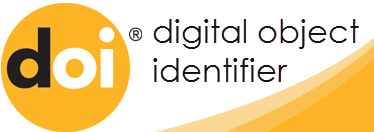CRITICAL READING IN EFL TEACHING
Abstract
At the beginning of the 21st century, many educational institutions started to change their attitude toward teaching reading skills. They emphasized reading using critical thinking skills instead of traditional content-oriented reading. It became clear that, in English Language Teaching, developing students’ critical thinking skills improves their target language proficiency and nurtures their effective literacy in English.
References
Anuar, N., & Awang, Z. (2020). An explanatory factor analysis of elicited students' salient beliefs toward critical reading. International Journal OfModern Languages and Applied Linguistics, 4(4), 101-115.
Bilki, Z., &Irgin, P. (2014). Towards becoming critical readers and writers: ELT students' perceptions on the effectiveness of critical reading and writing instruction. International Online Journal of Education and Teaching, 9(2), 987-1003.
Jabr, F. (2013). The reading brain in the digital age: The science of paper versus screens. Scientific American.
Jensen, M. N., & Scharff, L. F. (2019). Improving critical reading with e-texts: A controlled study in a collegiate philosophy course. Journal of Scholarship ofTeaching and Learning, 19(3), 49-64.
Moore, T. (2013). Critical thinking: Seven definitions in search of a concept. Studies in Higher Education, 38(4), 506-522.
Pirozzi, R. C. (2003). Critical reading, critical thinking: a contemporary issues approach. Longman.
Tomasek, T. (2009). Critical reading: Using reading prompts to promote active engagement with text. International Journal of Teaching and Learning in Higher Education, 21(1), 127-132.
Tompskins, G. E. (2006). Literacy for the 21st century: A balanced approach (4th ed.). Upper Saddle River, NJ.
Wallace, C. (2003). Critical reading in language education. Springer.
Wallace, M., & Wray, A. (2011). Critical reading and writing for postgraduates (3rd ed.). SAGE, London.
Wilson, K. (2016). Critical reading, critical thinking: Delicate scaffolding in English for academic purposes (EAP). Thinking Skills and Creativity, (22), 256-265.
Wilson, K., & Devereux, L. (2014). Scaffolding theory: High challenge, high support in academic language and learning (ALL) contexts. Journal of Academic Language &Learning, 8(3), 91-100.
Wolf, M. (2010). The importance of deep reading. Educational Leadership, 66(6), 32-37.











